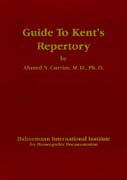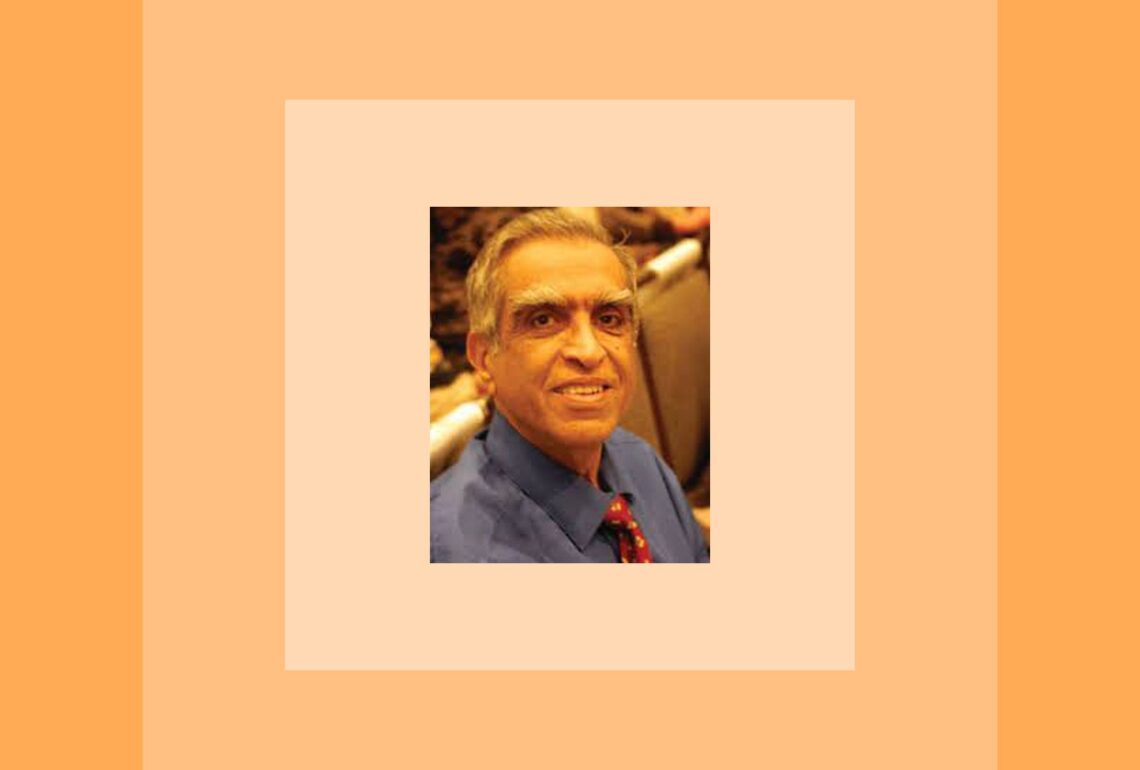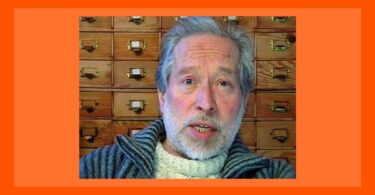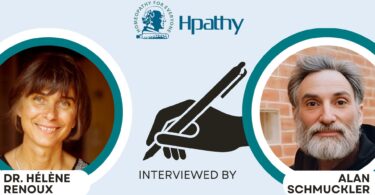Let me begin by sharing how I happened to be acquainted with Dr. Currim because, like most people driving through town, I am often beset with indecision over which homeopathy case conference tape to play in my car! Except on this particular day, I came across “Clinical Experiences with Carcinosin” by Dr. Ahmed Currim, and I thought, “This sounds like it might be interesting!” Well, that was an understatement! When I got home, I went right to the internet to see if Dr. Currim had any other conference tapes I could order, and, yes, I ordered them straight away! Then I wondered if he would actually speak to me, so I sent him an email, and to my surprise, he actually answered me 6 months later! He said he would be happy to do this interview, so… let me tell you a little bit about him.

Thank you, Elaine! I could easily give you 25 to 30 short cases and 2 or 3 long cases pertaining to my use of Homeopathy in the ER. I successfully used Aconite, Ant-t., Arsenicum, Bryonia, Belladonna, Carb-v., Digitalis, Hepar, Ignatia, Kali-c., Lachesis, Lycopodium, Nux-v., Phosphorus, Pulsatilla, Rhus-t., Sarsaparilla, Spigelia, Sepia, Sulphur..I usually gave medium (1M) to high potencies (10M, 50M). The results were very satisfactory (very good or no result; never an aggravation). I was able to help 3 dying patients to a peaceful end with relief of pain or horrible dyspnea when the regular meds gave no result; also some ob and gyn patients. Most of the remedies were based on knowing Kent’s Repertory and the important characteristic symptoms of the remedies and a faith in the truth of the doctrines.
Since you say you could easily give many examples of successful ER prescribing, would you give us some that might be instructive? Any stories you could share with us would be very much appreciated!
Case 1: 49 y old male, lawyer had an extensive Anterior MI (miocardial infarction) with compromise to his heart. He was in the CCU (Cadiac Care Unit) and developed Dressler Syndrome (a complication) which involves pericarditis (Kent pg. 835), pleural effusion (Kent pg 829) and a cardiac arrythmia. I was on call that night and was called to see the patient. He complained of chest pain worse on moving even a little. (Kent pg. 843) Deep breathing was painful (also Kent pg.843). He had received Demerol every 2 to 4 hours with some deadening of the pain. What was peculiar was that he was angry that his business needed his attention (Kent page 10) and really ought to leave the hospital and wanted to go home (Kent Rep. pg. 51). The worse from moving, pericarditis, pleural effusion and mind symptoms pointed to Bryonia, which he received in 1M potency. He fell asleep in a few (15 to 20) minutes; did not call for his demerol for 4 or 5 hours, and was able to be transfered out of the CCU to the floor in the morning. He felt much better with much less pain. There was less fluid in the lungs and the pericardial friction rub was reduced. I had also spoken to him kindly and requested him to let go all his thoughts of working. He was happier. Two days later he thanked me for taking the time to talk to him and said I was right about slowing down his work and that he would do so. He eventually left the hospital and went through a cardiac rehab program, and I lost being his care giver. I had been only 5 days in the hospital when I was asked to see him and I had little experience caring for such severely ill patients, but I acted to the best of my ability using my elementary knowledge of homeopathy to bring this man relief.
I saw all the earmarks of Bryonia in this case–talks of his business, says he wants to go home, worse least movement– and I wondered if it meant that to prescribe, even in the ER, you need to take the case?
In my experience I was able to do good work with what I call paragraph 153 (of The Organon) or black letter symptoms from Kent. Usually there was very little time and I had to act fast. Here’s another case:
Case 2: 80 + yr female had her third MI, I was called. She was in Acute Pulmonary Edema and Cadiogenic Shock. We could not find a vein because all the veins had collapsed. A surgeon was coming to do a cut-down (to find a vein). The woman was in acute respiratory distress. She was very anxious, and was drinking water in small sips; her heart rate was very rapid. I slipped a few pellets of Ars, 1M in her mouth. It was only 20 or so seconds. She gave a big sigh and closed her eyes and her breathing and heart eased as she went on into the beyond. No more pain of cut-down or trying again and again to find a vein. No more respiratory distress; just a peaceful end. (Read Kent’s essay in his Lesser Writings— I truly verified what he wrote on at least 5 occasions.) I felt privileged to be allowed to help these people in their last moments of life and thank the Master for his teachings so full of truth.
Indeed! Did you know to carry certain remedies in your pocket, since you were working in the ER? By the way, we should probably point out that these remedies do not cause “death”, they allow the suffering patient to relax (as all correctly-prescribed homeopathic remedies do) so that the patient dies peacefully instead of clinging to life in agony and fear; so, a real blessing!
Yes I carried about 300 remedies with me. They were wrapped in small paper packets neatly labeled in alphabetical order for easy access.
Case 3: 60+ year male was going to have cardiac cathertization in the morning because of chest oppression. His attending wanted him catheterized so that he could have his procedure easily the next day. But he was difficult to catheterize (Spasm?). The nurses were unsuccessful. I was called to try. I spoke to the patient and reassured him. He had had pain when the nurses tried to force the catheter up his penile urethra. He told me that he thought it was probably because “he had difficulty passing urine and could only pass urine while standing. I had some Sarsaparilla but only in 10M (Kent pg 661 Left column) I gave it to him. 10 minutes later I went to his bedside spoke to him with lot of reassurance, telling him I had given him a natural remedy to help his urethra. I succeeded easily in getting the catheter through the urethra into the bladder. He voided; had a comfortable night. In the morning his BP was lower, the chest oppression was better. (Was this due to Sarsaparilla? Kent 838-Oppression, or was this due to a restful night and less pain or stress?) He told the cardiologist how well he had been taken care of by me. The cardiac catheterization went well and without incident. After the procedure he was able to urinate more easily and did not have to stand; but could do so sitting on the toilet bowl.
So Elaine this is a very minor story but it brought both the patient and me a lot of satisfaction and also brought a piece of knowledge of Sarsaparilla that I never knew.
Case 4: 48 y/o white male with metastatic lung cancer, in severe respiratory distress and in great pain. Mets to liver. Jaundiced. Total Bilirubin about 20!! I was called at around 4AM. I saw a man lying in the bed with nasal O2; very yellow with the jaundice. I was asked to give him more morphine (MS) (Orders of the attending physician) to soothe his pain and suffering. He had already had over 25 mgms of IV MS. He had rattling respiration, was in severe respiratory distress. I could not count his pulse; but the nurse (who had pediatric experience) thought it was about 180. I asked him about his pain and he groaned and begged of me to give him relief, so great was his suffering. Kent pg 9: Begging, entreating: Arsenicum, Stramonium. Here was someone with so much suffering who was terminal. I sent the nurse for more O2. I had 3 remedies in my pocket: Ant-t.1M, Arsenicum10M, and one I cannot remember. Since the man was suffering so much and was begging I was able to get 3 or 4 pellets of Arsenicum 10M in his mouth. The result was almost instantaneous. He looked at me with such a loving thankful glance, and gave a deep sigh. I had the stethoscope on his chest and heard his heartbeat slow down from the 180 and within 30 or 45 seconds it was about 60/min. He closed his eyes, and went off to the happy hunting grounds. No more suffering; no more respiratory distress; just a quiet whoosh of 2 or 3 breaths. I loved Kent’s account of these kinds of cases in his Lesser Writings and could only feel a deep sense of gratitude for being able to assist this man in his last moments to decrease his suffering.
I immediately had to deal with his grieving wife and daughter, who were in so much distress, yelling almost hysterical. I was asked to give them “something to calm them”. I told them that in my culture the doctor tries to comfort the grieving family and asked them each to drink some water from the cups in the room, and that water at such times soothes the person. (The cups had Ignatia 10M dissolved in them.) They drank and a few minutes later I observed that the lower eye lids of both mother and daughter were not so red, they had calmed down and they efficiently took care of the death certificates and went home. I could go back to my sleeping room. The next day I could read the nurses notes after they had written them before leaving the shift and noted that one of the nurses had written how the patient was drinking cold water in sips and restlessly moving his toes, confirming the prescription of Arsenicum. So this is one more experience.
Recently I have had the privilege of treating a 4 year old boy with seizures. He was operated on for cancer in the brain which destroyed many of his normal functions. I had treated him before with little success. But recently the father tried again. I got symptoms of constipation, grinding teeth at night, chronic dilation of pupils which led me to try Opium 30C 2 or 3 times per day with excellent results. There was a marked decrease in seizures and marked improvement in constipation and sleep and I have continued with Opium 200.
Could I trouble you for another ER case?
It was only my second week in July 1979. I was asked to see a very severely dyspneic patient with COPD. On many bronchodilators severely ill. He was in Atrial Fibrillation and a very erratic beat, very irregular. Seeing him in the ICU with the nurse, I found rattling respiration with copious mucus. He was being suctioned every few minutes. He had already been resuscitated a few days ago and suffered a fracture of his sternum from chest compressions. The family was sincerely requesting not to resuscitate. The attending physician only gave orders to do our best but wanted Diuretics to decrease the mucus and pulmonary edema and more bronchodilators. With my relative inexperience and general ignorance about handling such severe lung disease with the patient so near the end, I put a few pellets of Antimonium tart. on his tongue gave p.o fluids because of his dry mouth and decided to check on him every 2 hours. But within 30 to 45 minutes the nurse called again. His breathing had eased a little, the mucus was easier to suction and a good bit came out with some decrease in the rattling. But more than that his heart rhythm converted to Regular Sinus Rhythm (after over 2 weeks of Atrial Fibrillation). He was grateful. His family was around him and thankful I had not “called a code” and thankful to see him more comfortable. But lo and behold his heart started to slow down and he went into a slower and slower rate (a dying heart) and gently closed his eyes to go to that happy place where his loved ones will find him one day. The family was thankful, and I was deeply grateful to verify Kent’s Lecture once again.
Case: A 35 year old strong male construction worker came to the ER screaming with pain saying he was dying. Upon enquiry I understand that a small metal filing had gone into the eye while he was grinding some metal. He was clutching his eye and was very afraid for me to examine it despite all reassurances that he would be OK. So I told him I would first give him a pain killer and then wash the eye to which he agreed. I quickly put a dose of Aconite 10M on his tongue, went to prepare his eye wash. Within 2 or 3 minutes he was calm and said the pain was relieved greatly. At this time I could clean/wash his eye, remove some tiny piece of metal splinter, examine the cornea for injury, instill 2 drops of dilute Euphrasia; put a patch on his eye and send him home. He reported next day feeling happy without pain and with a normal eye.
Case: A 36 year Indian woman was brought in to the ER with severe Chest Pain, tachypnea of 26, tachycardia of 160 and a BP of 170/125. Lungs were clear. History showed that she had been on beta blockers for HTN. Since she had some bad effect of the medicine she stopped it suddenly on her own and in a sense this was a reaction to the sudden discontinuation of the beta blocker (well known). After obtaining the history and physical exam I put a few pellets of Aconite 10M in the mouth gave fluids and sent the patient to the ICU for observation. In 1 and 1/2 hour she had fallen asleep. Her BP was 120/80, Normal Sinus rhythm, normal breathing . The next day after the Cardiac Enzymes were normal she was sent home and asked to be followed with her own MD.
Ahmed, I knew the eye case right away! Hooray! But, the case above, how did you know to give Aconite?
I forgot to add she was afraid that she would soon die if she did not get help right away; in addition she had an expression of great fear on her face. But the sudden appearance in her case of tachycardia and tachypnea from one hour to the next spoke for Aconite. Also Aconite is one of the first remedies to think of in cases threatening the heart (fear, fright etc.)
Very interesting! See? This is what it should be like in hospitals! This is how it can be! Well, there you have it, folks, a glimpse into the future– we can only hope.
All right everybody, Dr. Currim’s books, The Collected Works of Arthur Grimmer, MD (900 pages for only $50.00. Shhh! Don’t tell him he should be charging a lot more!), and Guide to Kent’s Repertory (250 pages, only $30.00, and if you buy the 2 together– $75.00. Yeesh! Don’t say anything!)
 |
 |
Let me just tell you about Arthur Grimmer. Grimmer shared his office with James Tyler Kent, he was Kent’s student, he practiced in Chicago from 1906-1963, and he’s probably best known for his treatment of cancer using homeopathy. I don’t hear the cash register ringing….
Thank you very much, Dr. Currim!!!!!
______________________________________________________
Ahmed Currim, MD




